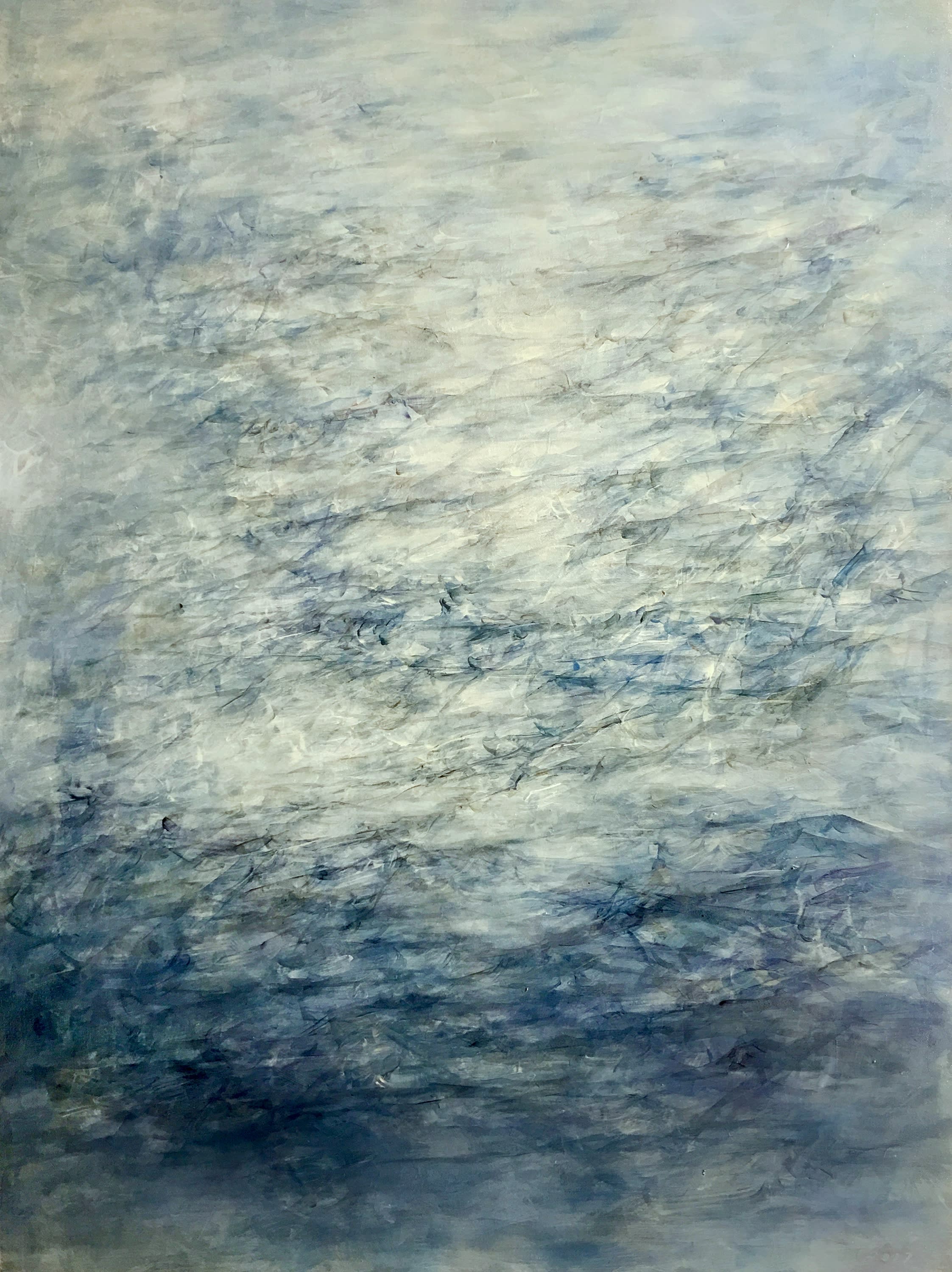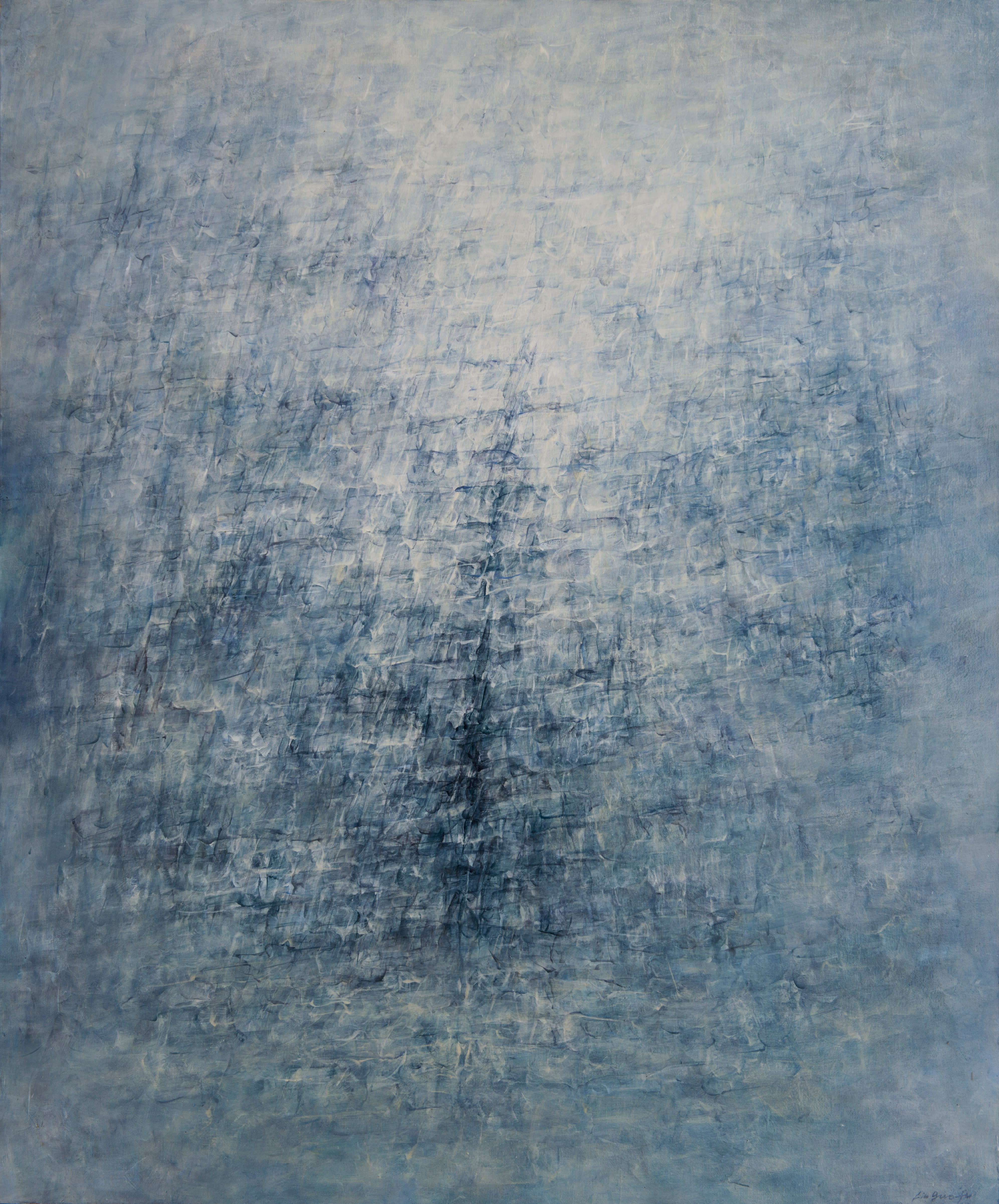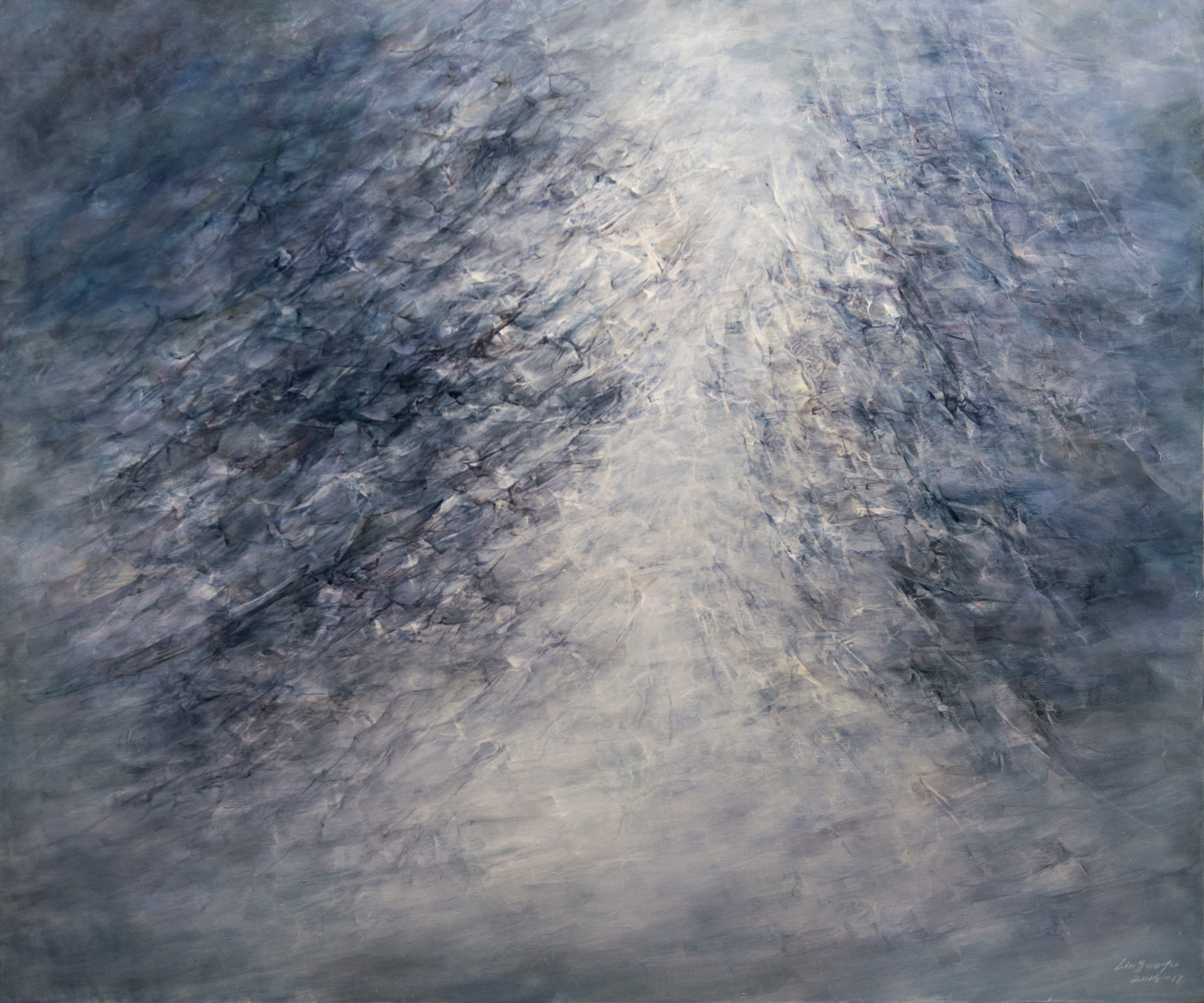
ARTicle is a feature curated by 3812 Gallery, presenting must-read articles by curators, scholars and art critics focusing on Eastern Origin in Contemporary Expression for your weekend digest.
In the fourth edition of ARTicle, we hope you will enjoy the study of Liu Guofu's colour through an essay written by world-renowned philosopher Dr. Andrew Benjamin, first published in the exhibition catalogue Vibrating Double Shadows in 2018.

Liu Guofu, Pervasion No. 21, 2016, Oil on canvas, 90 cm x 120 cm
SURFACING COLOUR: ON LIU GUOFU
Dr. Andrew Benjamin
For painting it might have seemed that colour was all. In the history of European art colour has always exerted a twofold hold. In the first instance colour was essential in order to let bodies stand forth; thus, to let bodies be sites of incarnation. Carnality depended on colour. This is, of course, one of the great insights of Hegel's Lectures on Aesthetics; part of Hegel's own engagement with the presence of colour in painting traces the interconnection of colour and incarnation. Equally, colour had a continual symbolic register. Colour carried meaning; differing colours having different registers. Within European art colour is bound up with at least these two possibilities. However, the move from figure to abstraction meant that colour's load had been lightened. Abstraction, though perhaps, more accurately, abstracting as a process, brought colour into its own. Nonetheless, colour remained connected to what had preceded abstraction. There is a set of complex realation that define colour and which, when taken as whole, will be called the colouring effect. Even though the history of colour continues to be written that history is comprised of the colouring effect.

Liu Guofu , Pervasion No.5, 2014, Oil on canvas, 150 x 130 cm
If there is another possibility for colour, not just to the use colour but to allow colour to make a fundamentally different demand on thought, a demand that moves colour beyond the colouring effect, then it has to hold back these different registers. That possibility has to move colour beyond its presence either as a melancholy remainder (which would be abstraction understood as colour announcing its loss of figure and thus incarnation), or a symbolic register or its having been repositioned as the decorative. The beyond - thus another work, colour’s other possibility - is not a utopian aspiration. The beyond occurs precisely when art’s work - i.e. the work of the work of art - calls in ways that the conventions that have continued to sanction responses no longer hold sway.
Paintings by Liu Guofu exert such a call. With those works what becomes clear is that colour can allow for forms of dispersal that break with the attribution to colour of any real sense of either solidity or unity. And, as a result, colour would no longer be a field condition in which colours could then be presented either in terms of juxtaposed blocks or colour/line relations. Nor, equally, would colour be simply broken up and become, as a result, a plurality of different colours. That fracturing of the unity of colour - remembering that it will always be a plurality of different colours - would then be reassembled or rearranged such that the work of colour would come to be equated with the creation of patterns. Again, these are aspects of the colouring effect.

Liu Guofu, Pervasion No. 24, 2017, Oil on canvas, 120 x 90cm
In Liu Guofu’s work colour is importantly reconfigured. The forms of dispersal locate the effect within colour such that modulations, in fracturing unities, then draw attention away from the traditional history of colour in painting. It is important to be precise here. The movement is not from painting. On the contrary, it is another move to painting. Now, however, painting approximates to the work of the surface. That approximation displaces the centrality of the colouring effect. In the move to the surface therefore there needs to be both another account of colour and of the surface.
The surface in its traditional sense may have been that which supported work. It could have been deepened by the operative presence of perspective. The surface, again traditionally, can be thought as an empirical reality and thus as the bearer work. Equally, the surface is there as site that bears the creation of other surfaces which themselves hold imagined depths. The creation of imaginary depths is what the work of perspective seeks to accomplish. (While it cannot be pursued here the connection between perspective and the colouring effect needs to be noted.) Here in these works, there is another sense of the surface. Again, difference is essential. Liu Guofu’s recent paintings work in importantly different ways. However, the difference is not just the distancing of perspective. Capturing those differences in writing is not a question of description. (This is philosophy’s continual dilemma!) Paying attention to the work of art necessitates heeding their call. The call of a work art is a demand. The demand is to philosophy is clear; the call is to think. The project therefore is thinking art. What here is a response?

Liu Guofu, Pervasion No.13, 2016, Oil on canvas, 180 x 150 cm
Answering the question in the negative is an opening. The refusal of perspective as traditionally understood; equally, there is the undoing of the history of either symbolic colour or colour’s relation to either carnality or the decorative. If writing here were just an essay in the philosophical in which the negative was to predominate, then the discovery of elements of impossibility or refusal would be all that mattered. The negative would be the point at which the analysis would be able to stop. Such a response would be philosophical in a very restricted sense. More justice would not have been done to these works. Something else is at stake within them. The difference is that the limit of the philosophical comes to philosophy from art. Equally, the intervention that these art works make occurs within art with art. Here art responds to art’s history - understood, if only provisionally, as limited to the history of colour. Another movement in the history of colour is the ensuing demand. And yet, the nature of the intervention opens itself to thought. In that opening, limits are encountered, forms of negation may occur, however to stay with them, is to allow thinking to stop. Such a cessation - an indulgent holding to the negative - is not an adequate response to the call of art. Here that call is to think; thus to think in response to the demands that these works make to thought. To stay with the discovery of limits, is not a response that allows for the particularity of the work to endure. Works are named, Open Space, Pervasion, Cold Mountains and Trace. Each name identifies an object or series of objects. And yet, naming simply identifies. It does not name the work’s work.

Liu Guofu, Open Space No. 63, 2018, Oil on canvas, 150 x 180 cm
At the beginning there is the refusal of the colouring effect. A refusal that yields an opening. And yet, that is simply to name the point of departure. There is still colour. Colour still insists. Hence the question: What does it mean to say that the refusal of colours becomes the insistence of colour? (The significance of this question lies in the use of the plural colours as identifying the presence of the colouring effect.) However, caution is necessary. These works do contain different colours. There are greens, greys, black, the effect of white is also clear. It may be possible to identify other colours. And yet, none of this is relevant. The claim is that the work’s work is not in the colours. It is not there in the colouring effect since the latter presupposes that each colour is a unity and thus that works are comprised of either the juxtaposition of colours or the interplay of line and colour. In the recent paintings of Liu Guofu there are colours. They insist. However, that insistence is also their dispersal. Dispersal does not mean that colour vanishes. On the contrary, colour remains. Remaining by insisting within and as the work of the surface. It is important to maintain the cumbersome formulation - within and as - since what it identifies is the presence of colour as integral to the surface as the site of the work of art. While colour remains, it is no longer located as part of the colouring effect. There are graduations and modulations of colour. Colour does not stand for itself. Colour is absorbed within and as the surface and therefore, as has been suggested, cannot be separated from the work of the surface. It is as though what is occurring within these works is indifferent to colour even though there are colours. The movement of paint, even the creation of lines – the latter present as counter rhythms in, for example, Open Space – are gradations and modulations of the surface. Colour that is indifferent to the colouring effect is the precondition for the possibility that colour insists within and as the surface. Depth, which is bound up here with work of light - a lightening effect, even a whitening effect - are all there as the surface. Now the surface has depths. Neither the illusion of depth that would have been created by the colouring effect, nor the recourse to artificial flatness as an apparent opposite. Depth emerges as an effect of colour’s insistence. In other words, it emerges as part of the work of the surface. Liu Guofu’s work colour surfaces. There is surfacing colour.

